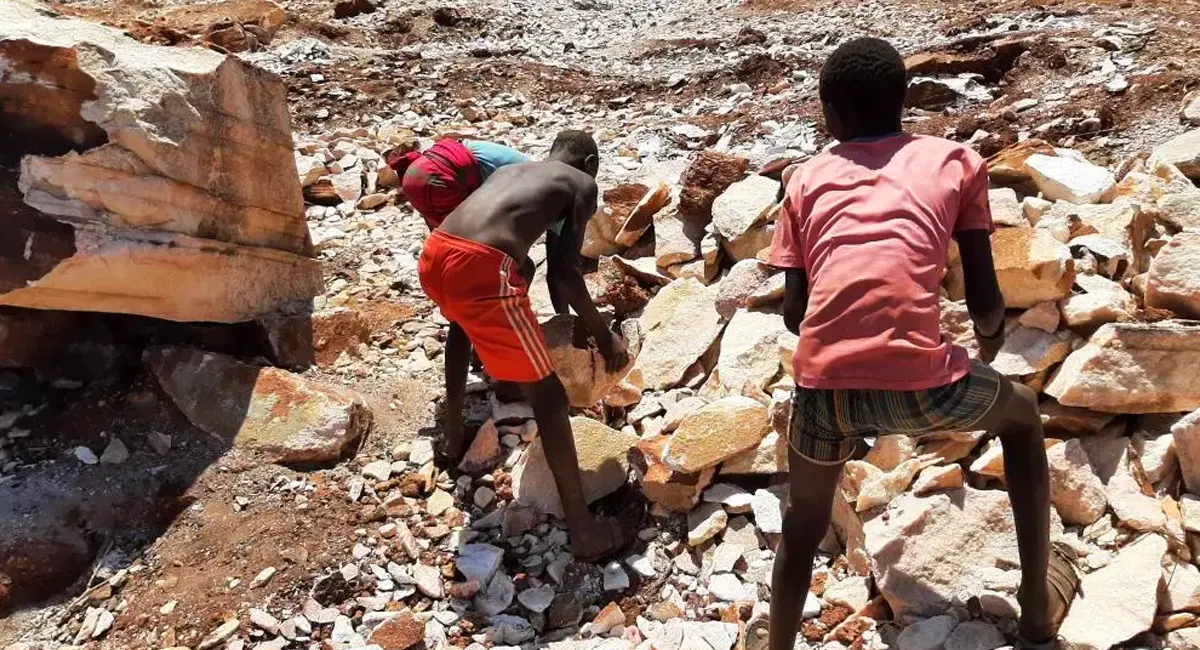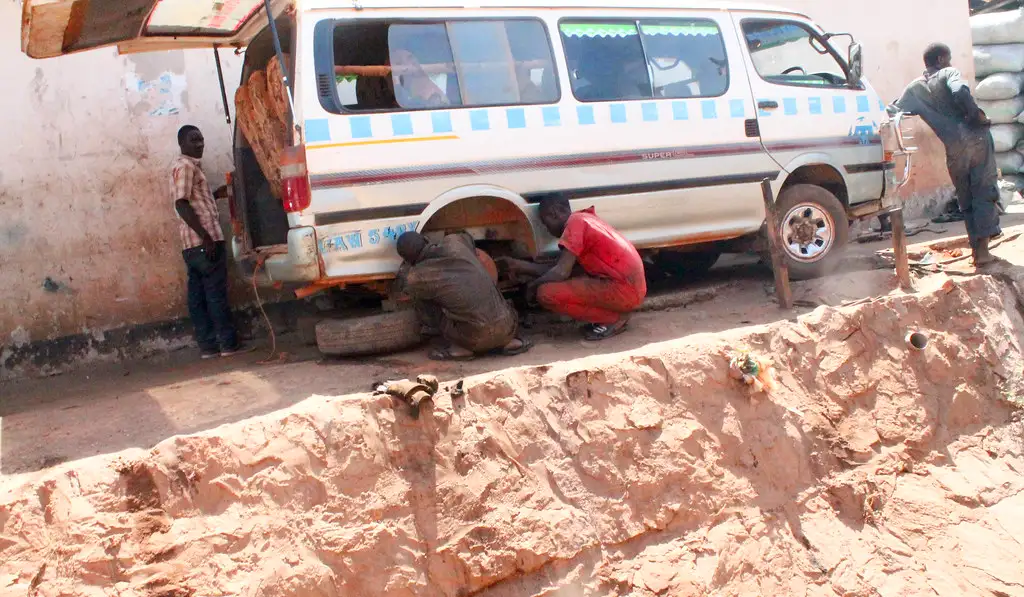
A group of teenage boys walk into a feed shop every week. With muscles bigger than their age and banter to keep them laughing for days, they saunter in, middle-aged manager in tow. Each boy carries a 100kg sack to the waiting Tukutuku. Once everything has been loaded, these boys then go to the farm where they work and also carry out farm duties. In addition to all this, the selling of the final product is also their responsibility.
These teenage boys are unaware of the illegal nature of the work, let alone the importance of having an education. They are content and happy; however, exposing a child to strenuous work puts them at risk. A child being any person under the age of 18.
National Child Labour Policy describes child labour as work that deprives children of their childhood, their potential and/or dignity, is harmful to physical and mental development and/or interferes with their schooling.
This work ranges from labouring in factories where children as young as five are required to loom carpets, to children working on the streets lifting weights ten times their own.
Children shouldn’t even be in the workplace. Yet on a daily, parents and caretakers are willingly giving out their kids to work, while the children willingly disregard their right to education and to live as a child should live. On one occasion, the earlier-mentioned group of teenage boys showed up with a much older gentleman. It turns out that this gentleman is the father of one of the boys, and he also works on that farm. Both parents and child are living their lives with zero regrets.
Poverty is often blamed most for the existence of child labour and exploitation. If families had enough money to care for all their children, none would be forced to work. If families could afford to keep their children in school, that would at least guarantee some kind of future for them. If children weren’t living in poverty, surrounded by thoughts on how ‘money is king above all else,’ maybe they wouldn’t be settling for less. They wouldn’t be absorbing abuse like dessert sand does with water, or suppressing their childhood like a stolen toy.
On the other hand, child trafficking is another massive reason child labour persists, with over 500 children in Uganda reported to have been trafficked in 2022 alone. According to a paper done on Child Trafficking, children are trafficked within Uganda for purposes of sexual exploitation, labor exploitation in the agriculture, fishing, mining, hospitality and domestic service sectors; and in some cases illegal organ harvesting; child sacrifice and conscription into armed militias. Children are vulnerable and naive, thus prone to all kinds of abuse and maltreatment.
Some of these children are coerced with sweets, others are promised a better life, while many stay working because of threats on their lives or the lives of their loved ones. ILO estimated that 218 million children between the ages of five and seventeen work in developing countries worldwide; of these, 49.3 million work in Sub-Saharan Africa.
Uganda’s National Action Plan highlights that over 2 million children in Uganda are doing work that puts their health, safety, development and education at risk. This accounts for 14% of the entire child population in the country. The prevalence of child labour in Uganda is 94.8%, the highest compared to Kenya, South Sudan, Rwanda, Tanzania, and Zambia.
Ayub, now a man, chose in his pre-teen years not to study and instead worked on the streets of Kampala, tending retail shops, offloading and stocking goods, and running errands. Everyone was okay with this; his employer treated him well, and he was earning money to sustain his family, which seemed a good enough reason not to go to school.
The problem is that because the community around Ayub did not value education, or even the mere fact that he was still a child, Ayub himself began to devalue education and stopped seeing himself as a child. When a child stops viewing themselves as a child, they may start taking on ‘adult’ behaviours, such as substance abuse, sports betting, or engaging in sexual activity prematurely.

Ayub is just one of over 2 million children engaged in child labour, knowingly or unknowingly. He is just one of over 1 million children who drop out of school in Uganda each year. Children like Ayub, along with their communities and caretakers, must be equipped with knowledge about children’s rights. No child is too young to know their rights. Amnesty International has supported this by creating two books so far: one for teens, entitled Know Your Rights and Claim Them, and another for children over eight, entitled These Rights Are Your Rights.
According to the 1989 United Nations Convention on the Rights of the Child (UNCRC), children’s rights include;
Survival Rights. This covers the right to life, adequate living standards, shelter, nutrition and access to medical services.
Developmental Rights. Children require reaching their fullest potential, thus their right to education, play and leisure, cultural activities, access to information and freedom of thought, conscience and religion.
Protection Rights. These require that children are safeguarded against all forms of abuse, neglect and exploitation. This covers special care for refugee children, torture, abuse in the criminal justice system, involvement in armed conflict, child labour, drug abuse and sexual exploitation.
Participation Rights. This allows children to take an active role in their communities and nations, encompassing the freedom to express opinions, to have a say in matters affecting their lives, to join associations and to assemble peacefully.
Repercussions for Disrespecting Children’s Rights
The repercussions fall back onto the child. For starters, 290 million children globally have not had their births registered, according to Amnesty International. This means that they have no proof of existence. Without this proof of existence, they have no legal identity, making it impossible for these children to claim their rights throughout their lives.
Another outcome is the increased abuse and exploitation of children. Annually, the number grows, leaving a stain on the fabric of innocence, innocence that defines the essence of who these children are.
Apio, an 11-year-old orphan living with her grandmother in Lira, was practically sold to her boss. For a few kilos of sugar and school fees for her younger siblings, Apio’s grandmother willingly gave Apio to work for a family in Kampala. As if fate had more cruelty in store, shortly after Apio began working for this family, she noticed that the man of the home (whom she calls Uncle out of respect) began looking at her little guava-sized breasts, attempting to touch them on more than one occasion and talking to her in a very lewd way.
Eventually, this ‘uncle’ began coming home earlier than his wife so that he could sexually defile Apio as many times as he pleased. He then threatened her job and made empty promises to her, and so she stayed silent and endured just like her mother did before her. Who would she report to anyway? No one would believe her, and even if they did, such ugly truths are bitter pills to swallow, so the adults find ways of bypassing them.
The World Health Organisation highlights that maltreatment has both long-term and short-term consequences on children. These include physical injuries, development of disabilities, mental damage—post-traumatic stress, anxiety, depression, and sexually transmitted infections. Even if Apio is able to live with the weight of the trauma, will she be the same happy-go-lucky girl she was before?
It goes without saying that in Uganda, engaging in child labour goes against the International Labour Organisation of the United Nations (ILO) convention, which Uganda is a signatory to.
What Should Be Done
Justice Centre exhaustively highlights all the legal knowledge one should have at the back of their mind in the event that they do have an underage individual working for them.
Firstly, the minimum age of employment in Uganda is 16 years. Secondly, for any child between 15 to 17 to engage in work, permits must be issued by the Labour Commissioner. The permit details the age restriction, number of work hours and conditions of the work environment. However, this applies only to children under apprenticeship.
Third, the employer must display a list of hazardous work that the child should not engage in. The child is not permitted by the law to work overtime and night shifts. Children should undergo medical examinations before employment and after every six months. Fourth, authorisation by the commissioner must be given. The commissioner is required to verify the child’s age, parental permission, and the availability of protective gear and training for the job.
The district labour office is in charge of handling any child labour-related queries and complaints.
The laws are in place, and so are the people to implement them, have been for years. What is lacking is proper implementation that is free from corruption, and the conviction for the child to speak up about the atrocities happening to them daily.
Children need to be made aware of their rights so that they have no hesitation to stand up and speak out. Speaking up about child labour, exposing the uncomfortable truths will most assuredly shed some light on the dirt swept underneath carpets
Additionally, children need more representation in places like the courts of law, in refugee settlements, and at the district level. More people need to stand up for them.
Finally, communities should actively engage in fighting child labour, after all, it is the village that raises the child. Sitting back and saying derogatory statements about the irresponsibility of the parents of the child hawker does not get them off the street. Calling this child in for tea, asking them about their family and actually doing something to get them off the street is a much better alternative.
Take the step today to end child labour!
For more of this content, join our WhatsApp Channel!
